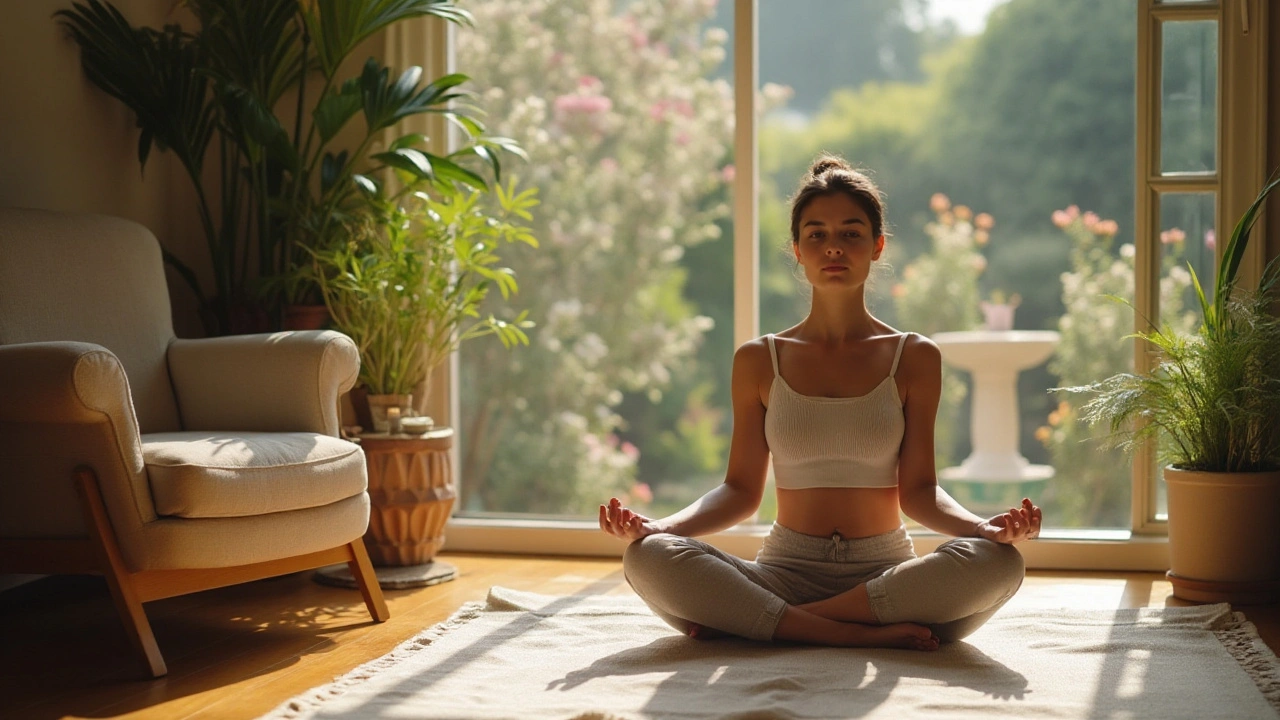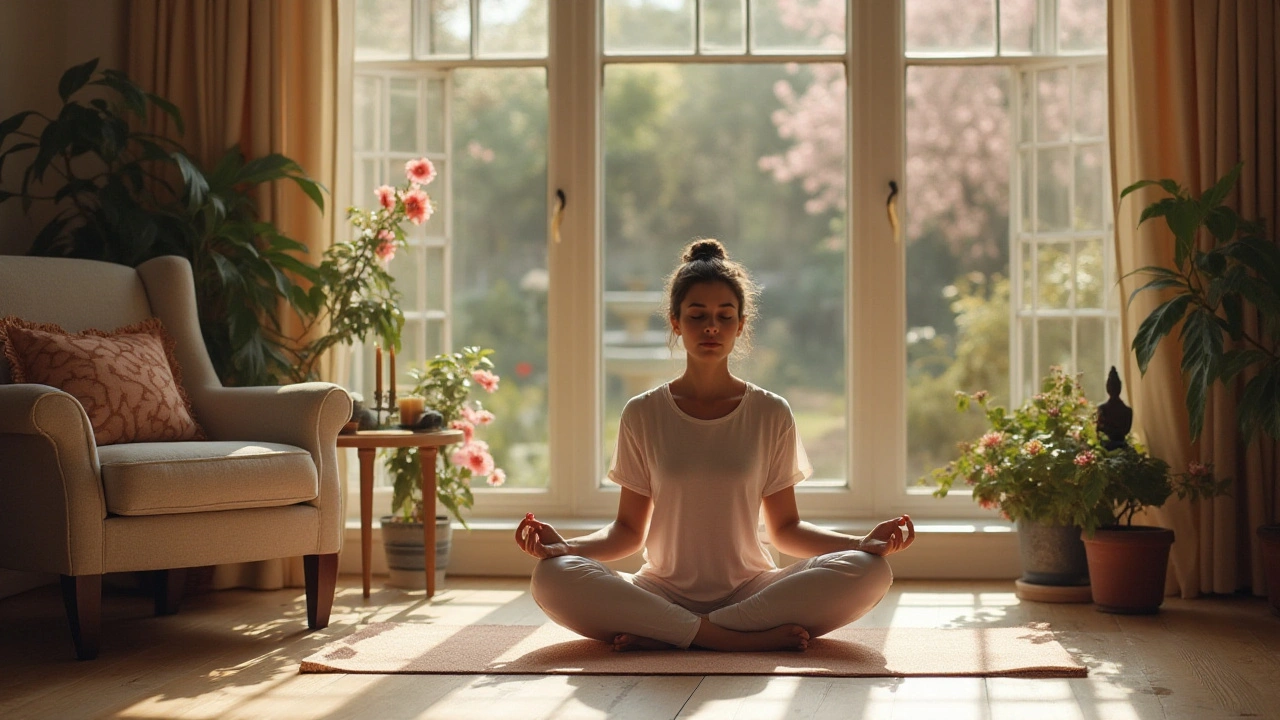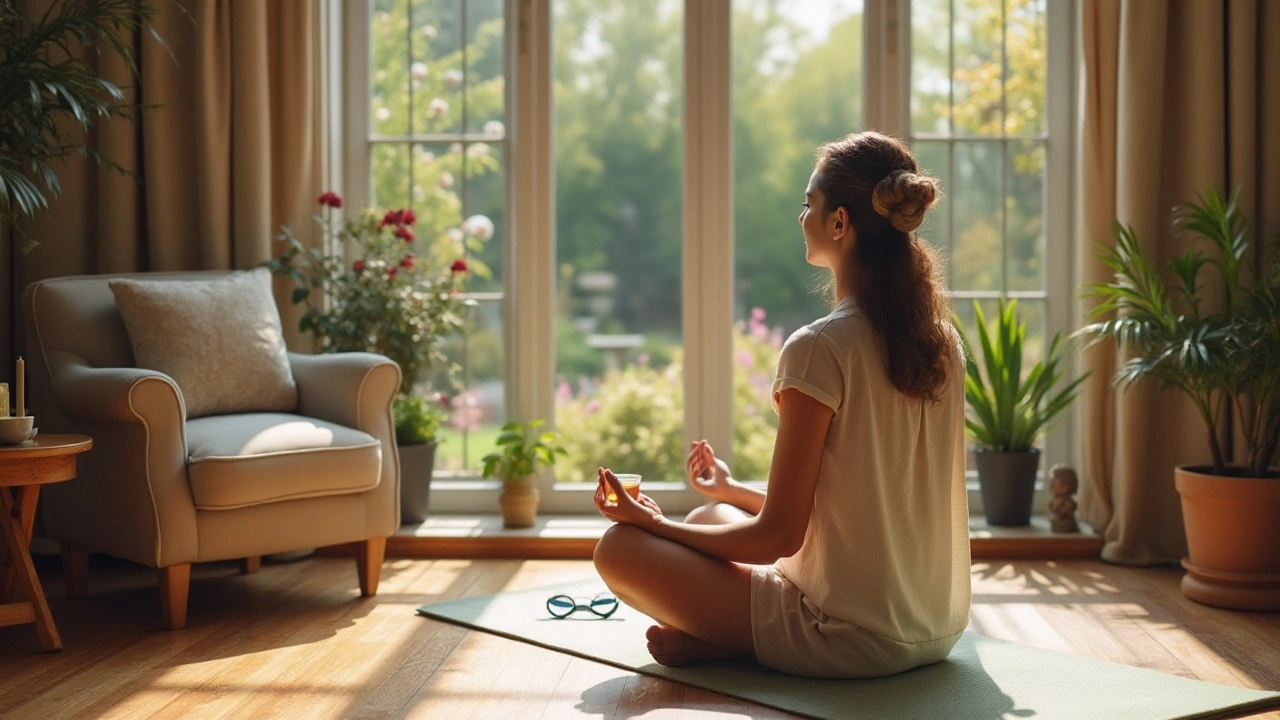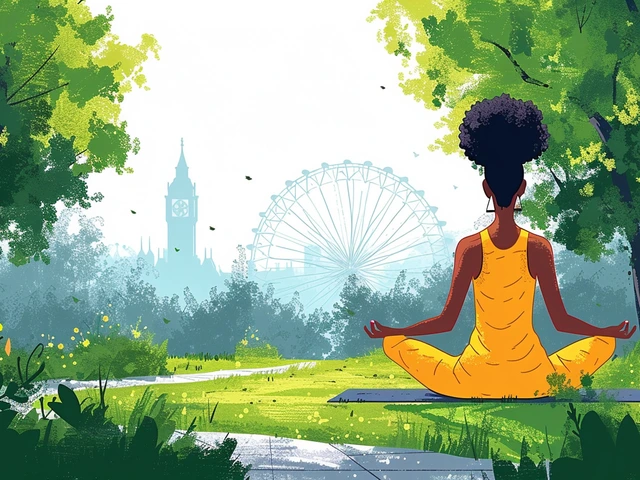Many people already know the benefits of meditation, such as reduced stress and enhanced focus. However, turning it into a regular habit can be challenging. This guide explores practical tips to help you build and maintain a consistent meditation practice.
From finding the right technique that suits you to creating a conducive environment for meditation, these strategies will help you make meditation a meaningful part of your daily routine. Staying consistent is key, and we'll cover some inspiring ways to keep you committed.
Getting Started
The journey to develop a consistent meditation practice begins with just a few simple steps. The hardest part is often taking the first one. Begin by setting a clear intention for why you want to meditate. Are you looking to reduce stress, improve focus, or perhaps enhance your overall well-being? Knowing your purpose can help keep you motivated when you face challenges.
Pick a specific time of day that works best for you. Some people find that morning meditation sets a positive tone for their day, while others prefer an evening session to wind down. The key is consistency, so try to meditate at the same time each day. Start small, with just five minutes of meditation. This makes the new habit less daunting and more achievable. Gradually increase the duration as you become more comfortable.
"The best way to meditate is to just sit. The best way to sit is to meditate." - Zen Proverb
Choose a quiet and comfortable place where you won't be interrupted. This doesn’t have to be a perfectly serene space; just somewhere you feel at ease. Sit in a chair or on the floor with your back straight, which helps you stay alert. Some people find it helpful to have a meditation cushion or bench. You can even lie down if that’s more comfortable, but be mindful not to fall asleep.
Feel free to experiment with different meditation techniques to find one that resonates with you. Some common methods include mindful breathing, body scan, guided visualization, or using a mantra. Each approach has its benefits, and the right one for you is the one that feels most natural and comfortable.
Don’t be discouraged by a wandering mind. It’s a normal part of the learning process. Gently guide your focus back to your breath or your mantra each time you notice your mind drifting. This redirection is actually a sign of progress, demonstrating that you’re aware of your thoughts.
Keeping a journal of your experiences can be highly beneficial. Write down how you felt before and after your session, what thoughts distracted you, and any insights you gained. Over time, this can help you recognize patterns and progress in your practice. Remember that meditation is not about achieving a silent mind but about becoming more aware of your thoughts and feelings.
Finally, don’t be afraid to seek support. Joining a meditation group or using meditation apps can provide guidance and accountability. Apps like Headspace or Calm offer various guided sessions that cater to different levels and intentions. Sometimes, having a structured program or a community can make a significant difference in maintaining your practice.

Creating the Right Environment
Your surroundings play a significant role in fostering a successful meditation practice. A cluttered or noisy space can disrupt focus and make meditation more challenging. Creating a serene, dedicated area for meditation can enhance your ability to relax and concentrate.
First, choose a quiet corner in your home where you are less likely to be disturbed. This space doesn't need to be large or elaborate; even a small, dedicated spot can make a significant difference. Ensure the area is free from distractions like electronic devices or clutter.
Lighting is crucial for setting the right mood. Natural light can be calming and help regulate your body’s internal clock. If natural light isn't available, opt for soft, dim lighting. Harsh lights can be overstimulating and counterproductive to mindfulness. Consider using candles or a salt lamp to create a warm and peaceful glow.
Comfort is key when it comes to sitting for extended periods. Invest in a comfortable cushion or chair that provides support without causing strain. Your posture should be relaxed yet alert. Experiment with different seating arrangements until you find what works best for you.
Adding personal touches can also make your meditation space more inviting. Incorporate elements that promote a sense of calm, such as plants, calming colors, or artwork that inspires tranquility. These details can help signal to your mind and body that it’s time to meditate, making it easier to transition into a meditative state.
In some cases, background sounds can aid in concentration. White noise machines, soft instrumental music, or nature sounds can help drown out disruptive noises from your environment. Be mindful, though, as the goal is to aid your practice, not distract from it.
Many seasoned meditators swear by the power of aromatherapy. Scents such as lavender, sandalwood, or frankincense are known for their calming properties. Using essential oils or incense can enhance your space's serenity. Remember, your meditation environment should engage multiple senses to bring about a holistic and immersive experience.
It's essential to keep your meditation space clean and organized. A tidy environment can help clear your mind of unwanted thoughts and make the overall experience more pleasant. Daily quick tidies and weekly deep cleans can maintain the area’s tranquility.
“Your sacred space is where you can find yourself again and again.” – Joseph Campbell
Lastly, once you've set up your space, establish a pre-meditation ritual. This could be a simple act like lighting a candle, sitting in the same spot, or taking a few deep breaths. Consistency in these small actions can train your mind to recognize that it’s time to enter a state of meditation.

Choosing the Technique
Selecting the right meditation technique is crucial in developing a consistent meditation habit. There are various methods, and the one that aligns with your goals and lifestyle is the best choice. Some popular techniques include mindfulness meditation, guided meditation, and mantra meditation. Mindful meditation encourages awareness of your thoughts and feelings without judgment, ideal for those looking to enhance their focus and reduce stress. Guided meditation involves following a narrator's instructions, perfect for beginners who seek structure. In contrast, mantra meditation involves the repetition of a word or phrase to focus the mind, often appealing to individuals who thrive on rhythm and repetition.
Understanding your own needs is essential. For instance, if your primary goal is to alleviate anxiety, mindfulness or guided meditations might be better suited for you. If you're seeking spiritual growth, consider transcendental or mantra meditation. It's not unusual to experiment with several methods before finding the one that feels right. Practicing different types can offer insights into what helps you better connect with your inner self.
Guided meditations often utilize apps like Headspace or Calm, which provide a variety of sessions. These can range from simple breathing exercises to more advanced visualizations. According to the American Psychological Association, “There is mounting evidence that guided imagery can enhance one’s ability to cope with stress.” Platforms such as YouTube also host countless meditation guides, often for free, making them an easily accessible choice.
Mindfulness meditation is another widely practiced technique. It involves observing thoughts, sensations, and feelings as they arise without trying to change or suppress them. This method is particularly effective for managing stress, as it encourages present-moment awareness. Research has shown that regular practice can significantly decrease the brain's grey matter in the amygdala, a region linked to anxiety and stress responses.
For those who prefer silence or minimal direction, mantra meditation can be incredibly effective. This technique uses repetition of a word or phrase, known as a mantra, to keep the mind focused. Common mantras include phrases borrowed from Sanskrit like 'Om' or 'So Hum'. Studies suggest that focusing on a mantra can reduce distracting thoughts and promote a deep state of relaxation. The rhythm and sound create a centering effect that can be especially soothing.
Exploring lesser-known techniques such as Loving-Kindness meditation can be equally rewarding. This method cultivates compassion and empathy through consciously sending kind thoughts to oneself and others. It can be highly effective in boosting mood and promoting a sense of well-being.
Incorporating meditation into daily life doesn't have to be an intimidating task. Start with just a few minutes each day, and as you become more comfortable, gradually increase the duration. Many find it beneficial to meditate at the same time every day, making it a part of their routine, like brushing teeth or having breakfast. Consistency is key when establishing any new habit.

Staying Consistent
Maintaining a consistent meditation practice can be quite challenging, but there are several ways to make it easier. One effective method is to integrate your meditation sessions into your daily routine. By doing it at the same time each day, it becomes as natural as brushing your teeth or having a cup of coffee in the morning. Many people find that practicing first thing in the morning helps set a calm and focused tone for the day.
Using reminders can also be very helpful. Setting an alarm or using meditation apps with built-in notifications can prompt you to take a break and meditate. These tools provide structure and can keep you from forgetting or putting off your session. It's about creating a system that supports your commitment to the practice.
Another important aspect is to be kind to yourself. It's normal to miss a day or even several. Instead of feeling guilty or giving up entirely, gently steer yourself back. Every moment is a new opportunity to begin again. As Sharon Salzberg, a well-known meditation teacher, says,
“The most important moment in the meditation practice is the moment you sit down to do it,”which reminds us that starting again is a continuous part of the journey.
Having a dedicated space for your meditation is also beneficial. This space can act as a physical reminder of your practice and can help you mentally prepare. Even a small corner with a cushion and a candle can make a difference. This becomes your special place where you can leave behind the day’s distractions.
Joining a meditation group, either locally or online, can provide a sense of community and accountability. Sharing your experiences with others and even meditating together can deepen your practice. Sometimes, knowing others are also on this path can be very motivating and encouraging.
Another effective strategy is tracking your progress. Many people find it useful to keep a meditation journal or use apps that track the number of days they’ve meditated. This can provide a visual representation of your commitment and growth over time. Celebrating small milestones can keep you motivated and reinforce the habit.
Meditation tips can also include diversifying your techniques. Experimenting with different types of meditation, such as mindfulness, loving-kindness, or body scan, can keep the practice fresh and interesting. This can prevent boredom and help you discover what works best for you in different situations.
If you ever find yourself struggling to stay committed, remember why you started meditating in the first place. Reflect on the benefits you’ve noticed since beginning your practice—whether it's reduced stress, better sleep, or a greater sense of mindfulness throughout your day. Keeping these positive outcomes in mind can serve as a motivation to continue your practice.





